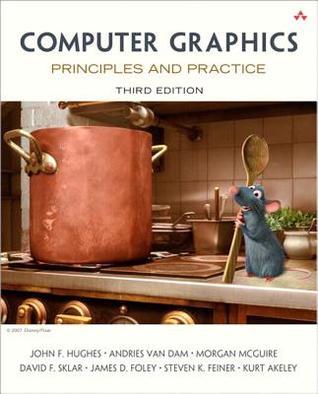the best books for developers

Topics: Computer Graphics
By John Hughes, Andries van Dam, Morgan McGuire, David Sklar, James Foley, Steven Feiner, Kurt Akeley
9780321399526
"Computer Graphics: Principles and Practice" is like the Bible for computer geeks who love to make cool pictures and animations on their screens. It's like the secret recipe book for all the magic happening behind video games, movies, and every pixel you see on your computer.
In this book, you'll dive into the geeky world of computer graphics. It kicks off by giving you a friendly tour of what computer graphics are all about, making it easy for even beginners to understand. Then, it takes you on a math adventure, explaining all those mysterious numbers and formulas behind the graphics, but don't worry, it's not as scary as it sounds.
Once you've got the basics down, the book shows you how to draw like a digital Picasso. You'll learn about rendering, which is like turning boring data into jaw-dropping images. Whether it's creating realistic 3D models, making stuff move like magic, or playing with colors like an artist, this book's got you covered.
But it's not just about the how-to. "Computer Graphics: Principles and Practice" also dives into the why. You'll explore the science of graphics and even peek into the future to see what cool stuff might be coming our way. It's like a roadmap for anyone who wants to understand, create, or just geek out about computer graphics. Whether you're a newbie or a pro, this book is your ticket to the amazing world of visual wizardry.
Chapter 1: Introduction
This chapter kicks things off by introducing the fascinating world of computer graphics, explaining the magic of turning data into stunning visuals, and why it's so darn cool.
Chapter 2: The Science of Computer Graphics
In this chapter, you'll dive into the science behind computer graphics and get familiar with the fundamental principles that make all those images and animations possible.
Chapter 3: An Overview of Graphics Systems
This chapter takes you on a tour of the hardware and software that make computer graphics tick, from pixels to processors.
Chapter 4: Graphics Programming
Here, you'll get your hands dirty with coding. The chapter covers the basics of graphics programming, helping you understand how to bring your ideas to life on a screen.
Chapter 5: The Graphics Rendering Pipeline
This chapter is like a behind-the-scenes look at how a 3D world is created on your 2D screen. You'll learn about the stages and processes involved in rendering images and scenes.
Chapter 6: The Discipline of Computer Graphics
Chapter 6 delves into the nitty-gritty of computer graphics as a discipline, exploring topics like image formation, image perception, and how we can make graphics look more realistic.
Chapter 7: Mathematics for Computer Graphics
Get ready for some math fun! This chapter explains the mathematical concepts and tools that are essential for understanding computer graphics, from vectors to matrices.
Chapter 8: The Geometry of Objects
This is where you learn about shapes and objects in computer graphics. The chapter covers geometric transformations, coordinates, and various 3D modeling techniques.
Chapter 9: Viewing in 3D
Chapter 9 is all about the art of seeing in three dimensions. You'll discover how to view 3D objects from different perspectives and angles.
Chapter 10: Color
Explore the colorful world of computer graphics in this chapter. It's all about color models, how computers create colors, and the science behind it all.
Chapter 11: Computer Animation
Buckle up for some animation magic! This chapter covers key animation techniques, from basic keyframing to more advanced methods like physics-based simulations.
Chapter 12: Interaction and User Interfaces
Discover how to create user-friendly interfaces for your graphics applications. You'll learn about input devices, widgets, and techniques for making your graphics interactive.
Chapter 13: The Future of Computer Graphics
In the final chapter, the book takes a peek into the future of computer graphics, offering insights into emerging trends and technologies that may shape the field in the years to come.
Chapter 14: Visual Realism
This chapter explores the quest for realism in computer graphics, including techniques for achieving realistic lighting, shadows, and material properties in your digital creations.
Chapter 15: Curves and Surfaces
Chapter 15 delves into the world of curves and surfaces, helping you understand how to create and manipulate these mathematical constructs to shape your 3D models.
Chapter 16: Advanced Topics
This chapter is like the bonus round, covering advanced topics like global illumination, texture mapping, and real-time graphics. It's for those who want to take their skills to the next level.
Chapter 17: Graphics Hardware
The final chapter is a deep dive into the hardware side of computer graphics, offering insights into the components that power your graphics card and make all those visuals pop on your screen.